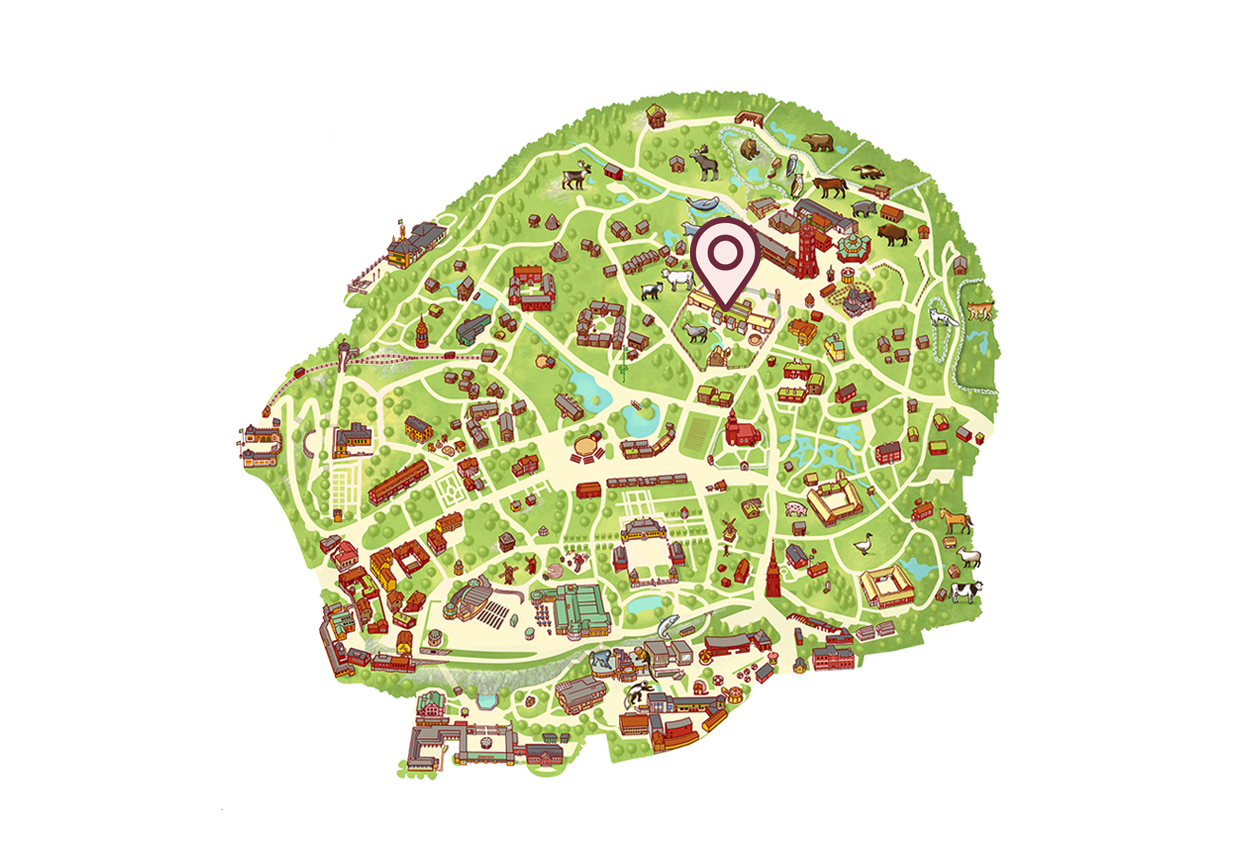- See and do
- The Zoo
- Animals at Skansen
- Bank vole
Bank vole
Voles are rodents with long, sharp front teeth. The bank vole mainly lives in various types of forests, including deciduous, mixed and coniferous forests.
-
It feeds mainly on different plant parts such as herbs, seeds, fruits, moss, roots and fungi, but it also eats some invertebrates. It climbs well for a vole, and often eats leaves on trees and beard lichen. In the autumn it eats hazelnuts, and from the gnawing hole it is possible to tell whether the nut has been opened by a bank vole, a squirrel or a nutcracker bird.
A small vole with great reproductive capacity
The bank vole is a small vole with a body that is between 80 and 135 millimetres long, plus a narrow tail of 35 to 70 millimetres. It weighs between 15 and 40 grams. -
About the bank vole
Scientific name:Myodes glareolus
Order:Rodents (Rodentia)
Family:Cricetidae
Weight:15–40 grams
Length:80–135 millimetres (plus a 35–70 millimetre-long tail)
Reproduction:Bank voles reproduce in the spring, summer and autumn. They can have several litters of up to ten young at intervals of roughly a month and a half.
Eats:Plant parts such as herbs, seeds, fruit, moss, roots and fungi, as well as insects
Distribution in Sweden:The whole country
Lifespan:Up to 9 years in the wild. 22 years in animal parks.
-
The top and sides are reddish-brown and the abdomen is whitish. The tail is also noticeably darker on the top than on the underside.
The bank vole reproduces during the spring, summer and autumn, and if it has access to plenty of food it can have several litters of up to ten young at intervals of roughly a month and a half. The nest consists of a small ball of moss below the ground.
The importance of voles for predators
Voles and lemmings are among the most important animals in nature. In some years there are very few voles in the wild, while in other years the vole population explodes. The voles then soon disappear again. This can be due to disease, food running out or large numbers of predators. Many years can pass between peaks in the vole population.
When they become numerous, there is plenty of food for owls, falcons, hawks, buzzards, ermine, weasels, foxes and lynx. In years with many voles, large numbers of owls nest in the fields, foxes and ermine have plenty of young, and grouse and other birds also increase in numbers as predators can catch voles more easily than young birds.
The vole as a pest
Voles like to come into our houses for warmth and food. When people talk about rats and mice in Norrland, they are almost always referring to voles, especially bank voles. They can cause damage in our houses and storerooms by gnawing on clothing, books, furniture and food. In the past, houses were sparse and often built of timber. This made it easy for voles to get in. People tried to get rid of the voles by setting traps or getting cats. They also liked to have ermine living near the house, as they are skilled vole hunters and are known in northern Sweden as ‘little cats’. Voles find it harder to enter today’s denser houses.
Hantavirus haemorrhagic fever
Unfortunately, voles can spread diseases. The most serious of these is hantavirus haemorrhagic fever (known in Swedish as ‘vole fever’), which causes fever, aches and pains in humans and temporarily disrupts kidney function. The voles themselves do not get sick, but the infection is spread through their urine and faeces. Humans can contract the infection through dust from wood and hay. In years with large vole populations, more than 2,000 people can be affected in Sweden, almost exclusively in Norrland. When vole populations are low, around a hundred people are infected each year.
You can find the bank vole here
